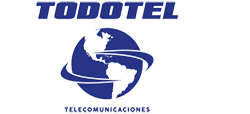Content

The value of the taxes varies by project, based on the country location. The Net Cash Flow Formula cost of taxes should be considered during estimation of the net cash flow.
While free cash flow gives you a good idea of the cash available to reinvest in the business, it doesn’t always show the most accurate picture of your normal, everyday cash flow. That’s because the FCF formula doesn’t account for irregular spending, earning, or investments. If you sell off a large asset, your free cash flow would go way up—but that doesn’t reflect typical cash flow for your business. When you need a better idea of typical cash flow for your business, you want to use the operating cash flow formula. Once you understand your net cash flow, you have a better grasp on your business’s ability to generate liquid cash assets in a given period of time. Tracking it over time will allow you to ensure your company can be profitable in both the short- and long-term.
What Is Cash Flow From Operations?
Typically, adjusting Net Income on the Cash Flow Statement is based on an increase or decrease in cash calculated from changes on the Balance Sheet from one period to the next. While businesses may need to review a statement of cash flow every month, you may wish to loosely calculate your individual cash flow in order to understand your own basic spending and earning habits. If you are thinking of investing, you may want to know what percentage of your income you can dedicate to investments. Because of the short-term variability inherent in FCF, many investors opt to evaluate the health of a company using net income since it smooths out the peaks and valleys in profitability. However, when evaluated over long periods of time, FCF provides a better picture of a company’s actual operational results.

This compounding results in a much lower NPV than might be otherwise calculated. The certainty equivalent model can be used to account for the risk premium without compounding its effect on present value. A way to avoid this problem is to include explicit provision for financing any losses after the initial investment, that is, explicitly calculate the cost of financing such losses. To some extent, the selection of the discount rate is dependent on the use to which it will be put. If the intent is simply to determine whether a project will add value to the company, using the firm’s weighted average cost of capital may be appropriate.
Operating Cash Flow Ocf
To make a more accurate assessment, you should compare this performance to industry benchmarks and get to the root of what caused such a decrease. To determine if a company’s net income is of “high quality”, compare the Net Cash Provided by Operating Activities to the Net Income. The Net Cash Provided by Operating Activities should be consistently greater than the Net Income.
The cash flow might turn negative in the short run because of this move. However, in the long run, this new product could result in increased cash generation for the organization, which will make the cash flows positive. Similarly, Net cash flows can be negative if the organization has repaid a big portion of the debt, but this may not impact its viability in the long term. Hence, the analysis has to be multidimensional when it comes to net cash flow. Though they may sound similar, both are diametrically opposite concepts. Net income is the resultant earning an organization has after adjusting all the operating & non-operating expenses and taxes from the total revenue earned. In contrast, net cash flow is the aggregate of all the cash generation by the organization over a period.
In accounting, the present value or balance is called the undepreciated value. As in traditional accounting, the sum of the undiscounted depreciation over the life of the project is equal to the original value of the project. The initial value of the resource can be obtained only as a residual, namely, the total discounted net cash flow less the initial value of the invested capital.
Whenever there is an increase in an asset account, it is marked as a negative value because you are debiting it. In this case, accounts receivable, inventory are asset accounts which are recording an increase, so that value is getting debited and is being recorded as negative. The two different methods are called the indirect method and the direct method. If you use the direct method the company must still perform a separate reconciliation in a similar manner to the indirect method. The reason for this is to make sure that all items have been accounted for and basically to double-check that the number you got from the direct method is right. Looking at the Balance Sheet and Income Statement in previous articles, Acme Manufacturing has taken on too much inventory in 2020 and is negatively affecting its free cash flow.

It’s important to remember that net cash flow does not include non-cash expense deductions such as depreciation and amortization. These expenses are used to reduce taxable net income, but not cash flow. This is cash both generated and used by the basic operations of a business, such as cash receipts from customers and expenditures for cost of goods sold and administrative expenses. The resulting $8,807.37 represents the indirect cost to the Contractor for the Project suspension in year 1.
So, if the company’s payroll taxes and annual depreciation costs add up to $50,000 and the rest of the company’s fixed costs amount to $40,000, then total fixed costs are $90,000 for the year. Net cash flow—the amount of cash gained or lost over a period of time—is a good indicator of a business’ viability and financial health. In this article, we define net cash flow and the formula for how to calculate it using examples. Net cash flow shows you how much capital you have on hand to continue operating the business.
How To Calculate Operating Cash Flow:
The Cash Flow tool helps to answer the question, «Where has my cash gone?». Starting in year 3 you will receive 5 yearly payments on January 1 for $10,000. You want to know the present value of that cash flow if your alternative expected rate of return is 3.48% per year. This is the net cash generated from the procurement and repayment of short and long-term debt, issuance of equity, purchase/sale of treasury stock, payment of dividends, etc. Accurately forecasting net cash flow also gives an investor an idea of how much money is available for ‘CapEx’ or capital expenditures and non-recurring fees like leasing commissions and tenant improvements. While these calculations are easy to do in your head, they can also lead to a major headache once the property is purchased and the property isn’t performing as expected. Instead, investors who use a cash flow analysis can create a much more accurate forecast for property value and true net cash flow.
Negative FCF drains cash and assets from a company’s balance sheet, and, when a company is low on funds, it may need to cut or eliminate its dividend or raise more cash via the sale of new debt or stock. This is the net cash a business generates from the core operations of the business. CFO includes tax refunds or expenses and changes in working capital. CFO includes net profits adjusted with non-cash expenses and incomes and changes in working capital. Non-cash expenses are added back to profits, and non-cash revenues are deducted. Short-term negative cash flows may also indicate that the company has invested in the construction of a second factory or in expensive new equipment. As soon as the investment begins to generate revenue, it will outweigh the failing of short-term weak cash flow.
Switch To Smart Accounting Try Zoho Books Today!
The depreciation formula for the project involves the total net cash flow. Again, unlike in a Hotelling analysis, marginal cost and the net price of the resource (the ‘Hotelling rent’) do not appear. The method can be generalized to production involving more complicated conditions. It is possible to derive capital expenditures for a company without the cash flow statement.
- The 1% rule states that the monthly rent should be at least equal to 1% of the property value, while the 50% rule says that half of the rental income will be spent on operating expenses.
- Peggy James is a CPA with over 9 years of experience in accounting and finance, including corporate, nonprofit, and personal finance environments.
- Instead, a buyer should create their own cash flow analysis by accurately determining the property’s rental income and monthly expenses.
- This is the net cash generated from sales and purchase of equipment and assets and other capital expenditures for core operations.
- These properties can be used to delineate admissible accounting schedules and can be considered to be the basic properties of economic accounting.
- However, you can also write it out by hand if you’re only working with a few numbers.
The same can also be calculated by subtracting the company’s cash payments from the cash receipts. Based on the type of transaction, cash flow can be calculated using either the direct method or the indirect method. In the indirect method, accrual-based transactions are converted to the cash format before calculating cash flow. Even though the indirect method is time-consuming and complex, most companies prefer this over direct method for its accuracy.
Motley Fool Returns
As used in this definition and for purposes of making the calculation contemplated thereby, the term «PARTNERSHIP WELL» shall mean a well in which the Partnership has an interest and which is then currently producing. This measures the relationship between operating cash flows and profit. The U.S. GAAP requires that a Cash Flow Statement prepared by the indirect method be included in financial statements, even if it is also prepared by the direct method. Therefore, most companies use the indirect method and the rest of this article refers only to the indirect method using Acme Manufacturing’s 2020 data. Free cash flow has its limitations, but it can also be a powerful tool. Consider it along with other metrics such as sales growth and the cash flow-to-debt ratio to fully assess whether a stock is worthy of your hard-earned money.
- Instead, it would usually be done as several separate calculations, as we showed in the first 4 steps of the derivation.
- If, on the other hand, it has weak cash flow or even negative cash flow (it’s losing money), then it’s financially weak and may even be in danger of bankruptcy.
- Calculating the changes in non-cash net working capital is typically the most complicated step in deriving the FCF Formula, especially if the company has a complex balance sheet.
- You can look at net cash flow both for an isolated period of time and comparatively, period over period.
- To determine the relation between taxes and depreciation so it can be controlled over the project life.
- Net cash flow is the amount of cash left over after a transaction has been completed.
In times of low inflow, review your discretionary spending, rent, capital costs, and payroll. Delay nonessential improvements and large equipment purchases until inflow has increased. Cut hours during non-crucial moments, and lay off anyone who is unnecessary or not pulling his or her weight.
How To Find The Gross Profit Margin
For example, while investing in new machinery or real estate may leave you in the red, you can expect to make your money back relatively quickly. Although net cash flow is an excellent barometer of financial health, it’s important to remember that some activities resulting in a positive cash flow may not be good for the business’s overall health.
Although in some cases the capability of work is equal to ready for operation, a different trend is more conservative and starts calculating the depreciation once the product is actually sold. The decisions regarding the accepted way to handle these questions depend mainly on the legal staff’s accepted concepts and if they are capable of justifying them in court. The various interpretations are aimed at reducing the cost after considering the tax on the investment by starting depreciation write-offs earlier. The general depreciation methods used in different industrial and nonindustrial projects are described in the following paragraphs.

An allocation is a long-run provision, determined when the investments are made. The negative of the change of the value over any period is defined to be the depreciation of the project in that period. First, the current net cash flow in the period is realized and is removed from any projection of future, remaining value. Second, all remaining flows are one period closer in time and are discounted by one period fewer. Usually, the first outweighs the second, and the depreciation is positive.
You cannot use net cash flow as the sole determinant of financial viability. You should measure net cash flow in conjunction with any changes in the level of debt , the sale of any fixed assets , and changes in the ongoing maintenance of the business . These additional items indicate that, despite apparently strong net cash flow, a company’s overall competitive position has actually declined.
How To Create A Break Even Analysis
We have to remember that cash flow is not the same as a business’s net income. The income statement, which calculates net income, shows the business’s worth at a given point in time. However, when businesses report their net income they are including any transactions that did not have an actual transference of cash, such as depreciation.
Related Investing Topics
The overall benefits of a high free cash flow, however, mean that a company can pay its debts, contribute to growth, share its success with its shareholders through dividends, and have prospects for a successful future. Kirsten Rohrs Schmitt is an accomplished professional editor, writer, proofreader, and fact-checker. She has expertise in finance, investing, real estate, and world history. Throughout her career, she has written and edited content for numerous consumer magazines and websites, crafted resumes and social media content for business owners, and created collateral for academia and nonprofits.
The cost will also vary, as it depends on the country’s laws and regulations. Fixed costs include, but are not https://www.bookstime.com/ limited to, wages, rent payments, advertising costs, insurance payments and premiums and utility bills.


Recent Comments